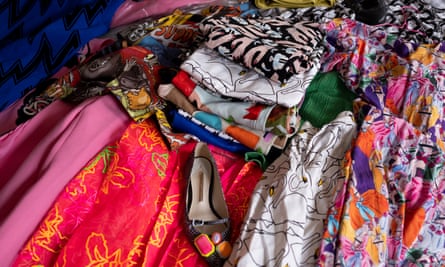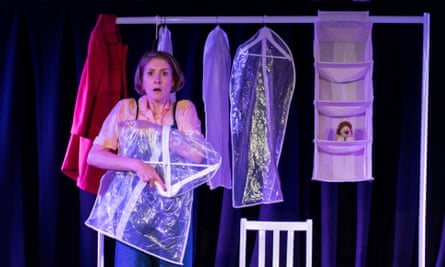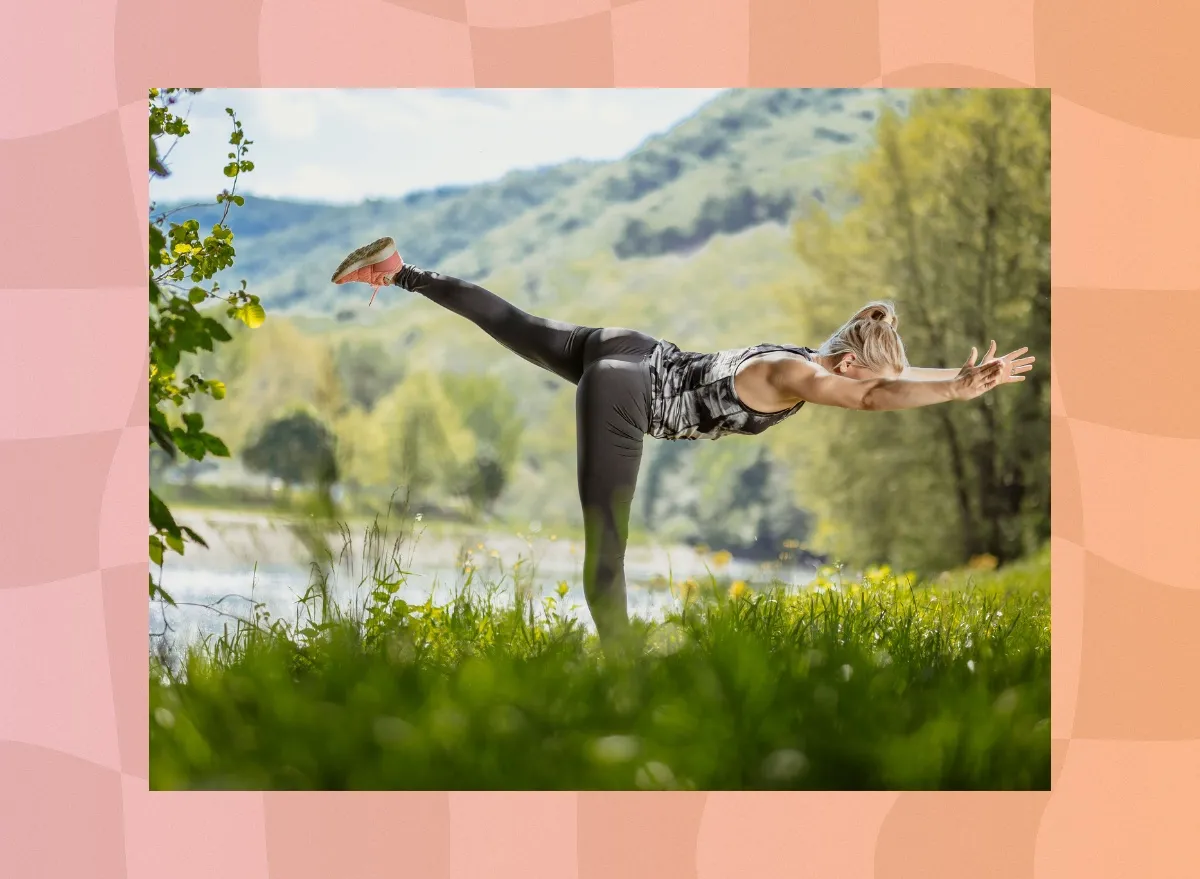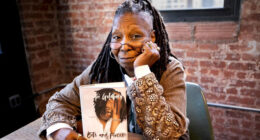I’ve always bought too many clothes, but my life was being ruined by hoarding

I’d spent years in a tearful cycle of shame and anxiety about my possessions and didn’t understand why – until I got help
I’ve bought my fifth ball gown today and although I don’t need it – and I’m not convinced the waistband would actually zip up around my thigh – I’m definitely going to buy it. It’s an absolute steal at £30 when the price tag indicates it was originally £700. I cannot believe how much money I will be saving if I buy this dress.
This thinking propelled me through my 20s and into my 30s. The joy of a bargain, of filling my wardrobe with clothes I’d never ordinarily have been able to afford. I can still remember my first designer purchase from an antique shop. I spotted it instantly: a metallic gold and silver appliqué pencil skirt, Christian Dior, £10. I was 24 and when I got home I hung it over my bed. I would become special enough to wear this skirt, I thought.
I was aware even then that the amount of clothes I was amassing was starting to panic me, but I soothed myself by thinking that most people I knew seemed to have way too much stuff. According to Hoarding UK, potentially only 5% of hoarders come to the attention of professionals and it’s thought that hoarding behaviours have been on the rise since the pandemic began.
“During early childhood”, says psychotherapist Toby Ingham, an expert on anxiety states and trauma. “Some of us learn to manage difficulties and problems by developing rituals and routines that help us feel safe. This can be where behaviours start.”

Since I’ve been aware of my hoarding behaviours, I’ve tried to unpick where and why they might have started, but try as I might I couldn’t pinpoint any specific events or moments. It was clear the behaviours had built up over time. No one becomes a hoarder overnight.
Even though I had well over 1,000 items, I had been referred to as “not a proper hoarder” by someone who was at the more extreme end of hoarding behaviours. It wasn’t meant as a criticism, but it made me feel uneasy. I knew if I carried on as I was, I would be considered extreme eventually. If you classify hoarding behaviours as acquiring too much, experiencing distress at the thought of discarding things and not being able to use your space as it was intended, then I certainly ticked all of those boxes. I’d spent years in a tearful cycle of shame and anxiety about my possessions and didn’t understand why.
Mandi is a Hoarding UK trustee and hoarding awareness ambassador who has battled with her own hoarding tendencies. I’d followed Mandi’s story on a Channel 5 documentary and it was the first time I’d seen someone on TV who also collected clothing and had such an infectious love and knowledge of their things. I remember sitting heavily on the sofa, alone, listening to her talk about her collection, showing off her beautiful vintage items, having a story for all of them – and I saw myself in her. I watched the programme a second time and felt a mixture of emotions, weeping, recognition, but also hope that change was possible.
By this point I had already started to write about my experiences, but when I look back, it took me a long time to recognise my hoarding behaviours for what they were, because all the media narratives I had come across were so extreme. I knew I was on a knife-edge; I was prioritising going to sample sales, even though I would often leave them feeling terrible. I was embarrassed to have people over to my flat. I would suction-pack and shove things away temporarily to keep them out of sight. I could never find anything. Each time I tried to let things go, I’d spend hours agonising over every single piece: the use, memory or dream I had attached to them.
Mandi said her love of buying vintage clothing developed at the age of 16. Now in her 50s, she has thousands of clothes, shoes, bags and accessories. I contacted her and asked her when she started to notice that it was a problem.
“It was when I realised I couldn’t have people over,” she says, sadly. “I couldn’t have dinner parties like I used to. I couldn’t control it. It was everywhere, in the kitchen, bedrooms and hallway. My hoarding disorder was ruining my life – and I didn’t see it happening.”
Mandi said it wasn’t until she went to her doctor with depression and anxiety in 2018 that it was suggested she might have hoarding disorder. Hearing other people’s stories, she recognised her behaviour and connected with Hoarding UK.
Talking to Mandi made me feel less alone, but I also wondered how it impacted the people around her, as I pondered on how it made the people around me feel. My London housemates were kind, I tried not to impinge on their space, but there was a shared cupboard we could never shut because I had crammed it with so many things. It used to bother me, but my flatmates never mentioned it. Once, I asked one of them about it and she admitted: “Yeah it’s annoying, but I figured it’s something you hate more than I do, so I didn’t want to make it worse.” My parents helped me move back home to Devon, and I remember their faces when we unloaded my things. They didn’t say anything; I know they wanted to help me, but I felt humiliated.
I was floundering, I’d come out of a terrible relationship, wasn’t honouring what I really wanted to be doing, and had had to leave London because I couldn’t afford to stay. I felt that all I had to show for my life so far were these things and that, however lovely they were, they were actually holding me back.
I was in my mid-30s when I started to confront how much I had. I was living in Plymouth and, even after selling 400 items at a clothing sale, still had a huge van stuffed to the brim. I remember a woman coming to the sale telling me to be careful, she was a psychologist and said I may feel the same rush selling as I do buying and have quite a drop afterwards. It was mostly freeing, letting things go, but I had a few wobbles, moments I wanted to stop time, take the clothes from people’s hands without having to converse about how I’d changed my mind.
READ RELATED: Diggy Simmons Cut-Off Fade Line-Up And Get a New Hairstyle
I bumped into a woman on one occasion who was wearing an outfit I’d sold her; she gushed at me about how much she loved it and it filled me with warmth. I knew my things were affecting my self-esteem. I was working all hours and in any free time I’d go to sample sales, trawl charity shops, find outfits that represented who I wanted to be when things finally fell into place. After I moved home, I remember sitting among my clothes in my childhood bedroom, like a cocoon but, instead of feeling safe, I felt I might disappear.
I was becoming disengaged from friends and family, declining invitations. It was a strange paradox because I’d created perfect scenarios, impossible set-ups for my life, but I wasn’t giving myself any room to explore the reality of who I was. I felt like I was forgetting to live.

“An obsessive mind starts to hoard details away,” Ingham tells me. “An idea takes hold of a person and it jumps from being a thought or a worry to being an action. Suddenly it turned into a behaviour.”
For me, it was a twin issue, the buying of things and then not being able to throw them away. Mostly there were clothes, shoes or accessories for future use, imbued with fantasies. The yellow, one-shoulder, floor-length dress I’d wear to an awards ceremony. A black-lace tea dress and patent Mary Jane shoes I’d wear for a date. The problem was, I bought most of the things to slim into. What was I telling myself? That I wasn’t good enough to wear these things now?
It wasn’t an obvious pattern for me while I was doing it, though I’m sure it’s a common one. I loved shopping and when I first discovered sample sales it was heaven. I couldn’t just go to a sale and buy one thing, like my friends; I’d be dragging four heavy bags home on the bus, tube and train. I couldn’t possibly buy less when everything at this sale was priced at £20. I’d often panic buy. I remember getting home from sample sale with a silk top I didn’t realise had little spurting penises printed all over it. At a lingerie sale I bought a stringy body that covered nothing and I could never figure out how to actually put it on. After getting encased in it on one occasion and having to call for help, I decided it was best left alone.
Why couldn’t I part with all this stuff? It felt like I was letting my dreams go, when in truth, if I could remove items, I’d be making space for things to happen. I did still love shopping, and I think I always will, but trying to organise and throw things away… not so much.
“All these pretty things were coming in,” Mandi said, “but they weren’t bringing me pleasure any more.”
When Mandi explained this I nodded, as I felt I’d reached that point, too. I couldn’t even find half of the clothes I’d bought, so how could I get pleasure from them? For me, I find things safe, comfortable and easier than people. I had created a little universe for myself but, rather than opening up my world, I felt suffocated by it.
As Ingham explained: “The act of obsessional hoarding creates a sense of control in the mind of the anxious person.”
In March 2020, I had planned to hike the South West Coast Path on my own; the idea of just carrying a bag of the things I needed and moving forwards every day was really appealing to me. The pandemic put a stop to that and instead I found myself stuck inside with all my things. I knew I had to change my life. I’d wanted to be a writer from a young age, but wasn’t doing anything about it. I started to put the time into my actual daydreams, rather than putting physical obstacles in the way –and slowly things started to shift.
I wrote a play based on my experiences and took it to the Edinburgh Festival Fringe. Breathless ended up winning the coveted Fringe First award and now it’s touring. Somehow by accepting the reality of my situation, and working to clear my life of things, I’ve ended up being more aligned to the person I bought those clothes for in the first place.
I’ve held sales, donated more to charity and intend to keep chipping away at my possessions. I know I’ll never be a minimalist, but speaking openly about this has helped and I’m aware that these instincts will raise their intrusive selves during times of stress, grief, change and instability, things that will come for all of us at some stage.
Hoarding became a mental health disorder in its own right in 2018 and I’m glad it’s being increasingly discussed and understood. I turn 40 this year and can finally say I’m starting to lead the life I wanted to. I’m planning my walk along the coast path again, only buying clothes that fit, and I’m letting things go that don’t serve me – and not just that awful penis top.
Breathless by Laura Horton is currently on at London’s Soho Theatre (sohotheatre.com). For further tour dates, go to @LauraChorton. For help and advice with hoarding disorder, contact hoardinguk.org or mind.org.uk
Source: Health & wellbeing | The Guardian







